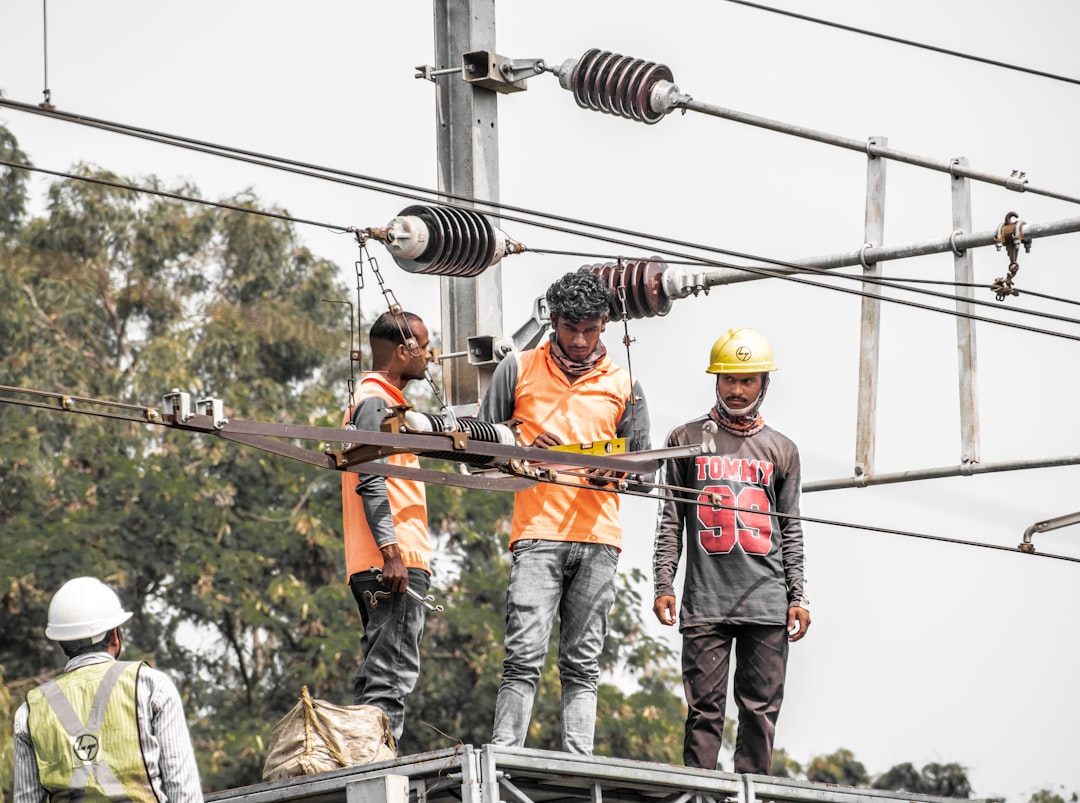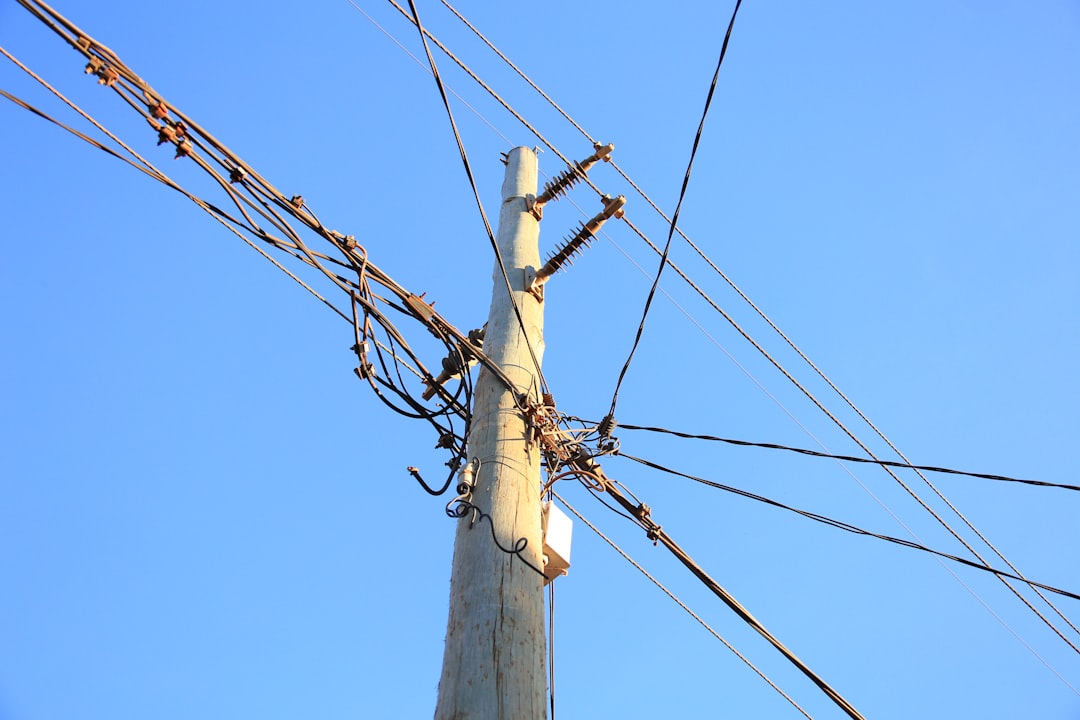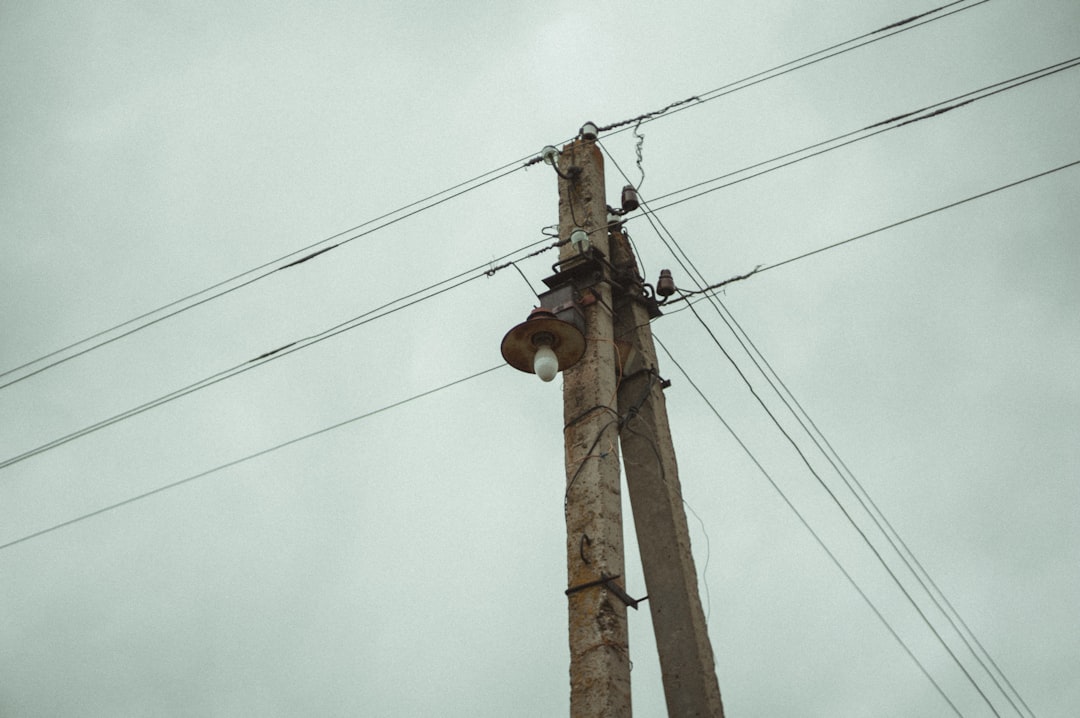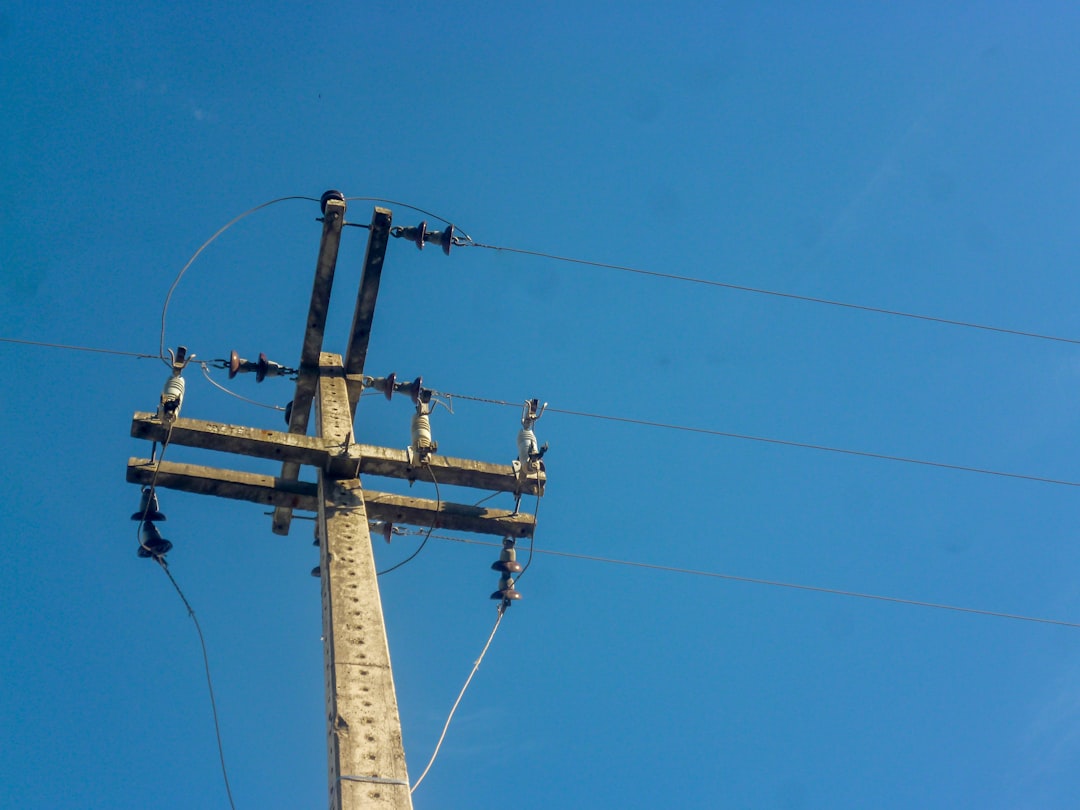

Engage prospects with a scan and streamline customer engagement with FREE QR code marketing tools by Sona – no strings attached!
Create a Free QR CodeFree consultation

No commitment

Engage prospects with a scan and streamline customer engagement with FREE QR code marketing tools by Sona – no strings attached!
Create a Free QR CodeFree consultation

No commitment
Pole line contractors play an integral role in building and maintaining the infrastructure that powers businesses, homes, and critical services. As demand for reliable electrical line construction, power line maintenance, and high voltage line work continues to rise, these contractors face increasing pressure to streamline project management, uphold rigorous safety standards, and maintain transparent communication with both clients and regulatory bodies. Many teams grapple with outdated coordination methods, missing critical information in the field, and losing track of key stakeholders and project milestones due to manual processes and incomplete data capture.
By bridging the persistent gap between physical worksites and digital efficiency, QR code technology offers a strategic, data-driven solution for pole line contractors. Connecting field crews, project managers, and clients through instant access to essential documents and live project updates not only eases the transition from paper-based reporting but also addresses the common challenge of visibility, ensuring that high-value project opportunities and key compliance signals are never missed or lost in paperwork bottlenecks.
When deployed thoughtfully, QR codes help contractors turn everyday touchpoints into interactive, trackable engagements. This increases operational safety, enhances client trust, and uncovers measurable insights that drive better project outcomes. This guide explores proven implementation frameworks and real-world examples for unlocking the full value of QR technology in pole line construction.

Manual reporting, scattered permit documentation, and slow feedback loops often compromise productivity and increase compliance risks for pole line builders. Missed inspection records, incomplete safety reporting, or lost paperwork can leave contractors exposed to regulatory penalties and delays. Modern QR code tools, like Sona QR’s product overview, make it possible to close these process gaps with little disruption to established workflows.
Replacing analog processes with QR-enabled experiences is a direct path to better outcomes. Printed binders become dynamic safety hubs; phone trees become instant alerts; manual sign-in sheets become digital logs that feed into your project systems automatically. The result is fewer handoffs, faster decisions, and cleaner audit trails that stand up to scrutiny.
Key steps to leverage QR codes effectively:
By embedding QR codes into core workflows, contractors achieve faster project turnaround, more consistent compliance, and clearer field-to-office communication. Crews spend less time chasing information and more time building, maintaining, and restoring critical infrastructure.

In the pole line contracting environment, remote sites, strict regulatory oversight, and shifting project priorities frequently collide. When project managers cannot see field activity in real time, they risk acting on incomplete data. Crews can miss critical updates, and clients can feel out of the loop. These lapses can produce safety issues, delays, and missed opportunities to strengthen relationships.
QR codes address these realities by serving as instant, universal entry points to the exact resource a stakeholder needs at a given moment. There is no app to install and no credentials to remember at the gate. With one scan, a lineman can access a pre-job briefing, a supervisor can pull up current permits, and a client can review a milestone for approval.
Whether applied to field signage, jobsite logs, or safety boards, QR codes provide the access and visibility pole line contractors need to prevent problems from escalating unnoticed and to regain control over both process and outcomes.
Selecting the right QR code format ensures the right information reaches the right stakeholder at the right time. For pole line contractors, the following formats are especially effective across planning, construction, maintenance, and closeout.
Dynamic codes are useful when content must change without reprinting labels or signage. For instance, a single code on a pole tag can link to current as-builts during construction, then switch to maintenance records once energized. Static codes are suitable for long-lived resources such as safety orientation videos, PPE guidelines, or company policies that rarely change. With Sona QR, you can generate and manage both formats in one place as your projects evolve.

Opportunities for efficiency and engagement are often missed when contractors rely exclusively on paper or limit communication to in-person updates and email. Strategic QR placement captures field and client interactions at the moment of intent, while enriching your project and CRM data. For contractor-focused ideas, see these practical contractor tips.
Start by mapping high-touch moments across a project lifecycle. Consider where crews search for information, where clients request status, and where compliance interactions take place. Then make the path to the right resource a single scan.
Use QR codes wherever high-value interactions occur to ensure that data from crew check-ins, inspections, and client reviews is captured and acted on. This is especially powerful during storm response and mutual aid when teams are moving quickly across multiple sites.

QR codes can anchor critical workflows across safety, operations, client communication, and business development. The following use cases match common contractor interactions and deliver measurable outcomes.
Each use case replaces manual steps with repeatable digital touchpoints. In many deployments, contractors report shorter closeout cycles, higher completion rates for safety documentation, and faster approvals compared to paper-first workflows.
Many pole line contractors miss timely follow-up opportunities because high-potential client interactions or partner engagement never make it into their CRM. Each scan is a signal: who is interested, where, and for what reason. By deploying multiple QR codes across touchpoints, you can segment stakeholders automatically and use that data to drive precise follow-up.
The key is to assign meaning to each scan. A superintendent checking a JSA is different from a municipal procurement officer reviewing a proposal. With dynamic codes and proper tagging, you can route both to the right destination and capture the context needed to nurture them effectively.
With Sona QR, each code becomes a smart entry point into your engagement funnel. Sona automatically enriches scan events with context and pushes segments into your CRM and ad platforms, so you can retarget based on real behavior rather than guesswork.
Disconnected messaging across channels leaves prospects confused and stalls deals. QR codes unify offline and online experiences by making every print and on-site asset interactive, measurable, and connected to your data systems.
A strong multi-channel approach starts with consistency. Use clear calls to action and a recognizable visual frame around your codes. Standardize design across trailers, vehicles, signage, and collateral so stakeholders know what to expect from a scan.
QR codes serve as the offline on-ramp to your digital marketing engine. With a centralized platform like Sona QR, you can manage codes at scale, monitor performance across channels, and sync scan data with your CRM to keep your pipeline and account plans accurate.
Running a QR initiative is most effective when treated as an iterative program rather than a one-off print job. The steps below help you plan, launch, and optimize with clarity and speed.
Start with a single, high-impact gap: safety reporting, maintenance tracking, or client communication. Pick a workflow that touches many stakeholders and has measurable outcomes such as JSA completion rates, average time to incident response, or client approval cycle time.
Validate that the use case aligns with a clear business objective. For example, reduce daily tailboard admin time by 50 percent, or shorten change order approval by two days. Validate success criteria with the teams who will use the solution and secure their buy-in before launch.
Determine whether static or dynamic codes better match your needs. Static codes are ideal for fixed destinations such as evergreen safety policies or orientation videos. Dynamic codes are best for content that changes or requires tracking, such as project dashboards or rotating crew assignments.
If you expect to track scans, retarget users, or update landing pages without reprinting, select dynamic codes. With Sona QR, you can edit destinations after deployment, append UTM parameters, and integrate with CRM and analytics tools without changing the printed code.
Design for field conditions. Use high-contrast colors, adequate size for scanning at the expected distance, and a concise call to action such as Scan for today’s tailboard or Scan for current switching order. Add a branded frame so the code stands out on equipment, helmets, and signage.
Test on multiple devices, scanning angles, and lighting conditions typical of your jobsites. Validate that the destination renders quickly on spotty networks and that forms use large, tap-friendly inputs. Pilot the experience with a small crew and gather feedback before a wider rollout.
Place codes where the intended action happens. Use entrance gates for safety check-ins, vehicle dashboards for daily inspection forms, plan sheets for version-controlled drawings, and client reports for milestone approvals. Provide a brief orientation to crews and partners so they know why and how to scan.
Pair physical deployment with internal communications. Announce new QR touchpoints in tailboard meetings, send a short how-to video, and post reminders inside jobsite trailers. This reduces uncertainty and increases adoption during the first weeks of rollout.
Monitor performance with tools such as Sona QR to see scan volume, time of day, device type, and geolocation. Layer in conversion data from your landing pages and forms so you can identify drop-off points and remove friction promptly.
Iterate based on findings. Move underperforming codes to more visible locations, refine calls to action, adjust landing page content, and retrain crews as needed. Share improvements and wins with teams to build momentum and expand to additional use cases.

Without comprehensive tracking, teams struggle to identify which assets and interactions create real value. QR analytics provide attribution for offline engagement so you can optimize spend and prove impact to executives and clients. Read more in Sona’s guide to offline attribution.
The objective is to connect scan behavior to downstream actions. A scan that leads to a signed change order or a maintenance contract renewal matters more than raw volume. Combining scan data with CRM activity paints a complete picture of your influence on pipeline and revenue through multi-touch attribution.
Sona QR captures real-world engagement. Sona.com turns that engagement into insights you can act on. Together they help you connect scans to revenue and make QR codes part of a performance-driven operations and marketing strategy.
Scaling QR initiatives requires attention to operational detail and change management. Start small, learn fast, and codify what works.
Consider creative deployments that fit your environment. Add a code to PPE packaging that links to heat stress prevention steps during summer months, or place a code on pole tags that opens as-builts and maintenance records for fast troubleshooting during outages. Small touches build trust and reduce friction across the board.
Pole line contractors working under increasing project complexity and heightened compliance requirements cannot afford incomplete visibility, lost documentation, or missed client signals. By embedding QR codes at every client and crew touchpoint, contractors make each interaction measurable and actionable. From safety compliance on jobsites to transparent updates for clients and automated data flows into internal systems, the consistency and insight delivered by QR technology reduces risk and accelerates results.
Contractors who embrace QR codes create a clear competitive advantage across the project lifecycle. Pain points such as missed opportunities, incomplete account activity data, and fragmented communication are replaced by instant, secure access to vital resources and reliable audit trails. With Sona QR you can generate, manage, and track codes in minutes. With Sona.com you can attribute scans to revenue and scale a connected offline-to-online strategy. Start with one high-impact use case, prove the value fast, then expand to make every pole, truck, and plan sheet a gateway to better performance. Start creating QR codes for free.
QR codes have transformed the pole line contracting industry by turning traditional site access and information sharing into seamless, efficient interactions. Whether it’s enabling secure and instant access to job sites, streamlining communication with field teams, or delivering up-to-date safety and project data, QR codes replace cumbersome manual processes with quick, mobile-friendly solutions that enhance operational productivity. Imagine supervisors instantly verifying crew entry or technicians accessing critical specs on the spot—boosting safety and reducing delays.
With Sona QR, you can create dynamic, trackable QR codes in seconds, update access permissions and information instantly without reprinting, and monitor every scan to optimize workflows and accountability. No lost time, no miscommunication—just smarter, more connected field operations.
Start for free with Sona QR today and transform every scan into secure access, streamlined communication, and a safer, more efficient job site.
Pole line contractors build and maintain electrical infrastructure including line construction, power line maintenance, and high voltage line work to power businesses, homes, and critical services.
Choose contractors that streamline project management, uphold rigorous safety standards, maintain transparent communication, and utilize modern tools like QR code technology to improve efficiency and compliance.
Qualified pole line contractors must adhere to strict safety standards, maintain compliance with regulatory requirements, and demonstrate the ability to manage complex projects with effective communication and documentation.
Safety standards include completing daily job safety analyses, maintaining accurate inspection records, following compliance checklists, and ensuring crews have access to current safety documentation often digitized through QR codes.
Maintenance involves tracking equipment service histories, reporting faults quickly via digital forms accessed through QR codes, and ensuring timely inspections and repairs to reduce downtime and maintain compliance.
QR codes digitize safety and compliance documents, streamline incident reporting, centralize technical document access, track engagement for accountability, and improve communication among crews, managers, and clients.
Common use cases include jobsite safety inspections, equipment maintenance tracking, client project dashboards, permit oversight, emergency communication, and training material access.
Contractors can capture scan context such as time, location, and device, compare performance across channels, respond in real time, integrate scan data with CRM and project management tools, and attribute revenue to QR engagement.
Static QR codes link to fixed resources like safety videos, while dynamic QR codes allow content updates and scan tracking without reprinting, ideal for changing project data or stakeholder engagement.
They should select high-impact use cases, choose appropriate code types, design with field conditions in mind, deploy codes at key touchpoints, communicate usage to teams, and monitor and optimize performance continuously.
Use Sona QR's trackable codes to improve customer acquisition and engagement today.
Create Your FREE Trackable QR Code in SecondsJoin results-focused teams combining Sona Platform automation with advanced Google Ads strategies to scale lead generation

Connect your existing CRM

Free Account Enrichment

No setup fees
No commitment required

Free consultation

Get a custom Google Ads roadmap for your business






Launch campaigns that generate qualified leads in 30 days or less.
